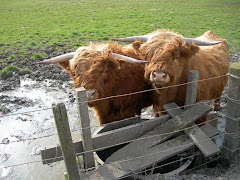So don't dismiss the retiring roach, Carp fishermen, as it is a member of the Carp family
The Roach, Rutilus rutilus, family Cyprinidae. Great fishing sport.
It has relatively large scales and its back is coloured dark brown or grey. With a bluish or greenish sheen, the sides are silvery white and they have a white underbelly.
Fishing for the Roach doesn't have to be too hard and here are some of our self catering cottages and fishing tips to get you started.
The Roach is one of the commonest fish in UK waters and can be found in stillwaters, canals, lakes and rivers, where it feeds on crustaceans, aquatic plants and detritus (dead or decaying organic matter). The Roach is generally found living in shoals and can often feed at all levels.
To start your session you want to be fishing at full depth and continue to loose feed or cloud bait at regular intervals, as you continue feeding the swim adjust your depth upwards because, remember, Roach feed at all levels, they will start to compete for the loose feed and will make their way to the source of the feed. You can also keep the fish feeding on the bottom by throwing larger particle baits into the swim.
Larger Roach tend to be particularly elusive and can keep to the outer fringes of the shoal, smaller individuals are easier to catch on relatively light line. Roach are infamous for their ability to throw the hook during a catch, which further perpetuates the idea that larger roach are notoriously difficult to bank.
Best holiday cottages and fishing baits for Roach are hemp, small redworm, bloodworm, punched or flaked bread, casters and good old Maggots. The only limit in type is regarding the size of the bait. Boilies and luncheon meat are generally avoided by Roach because they are too large for them to swallow.
Roach can be float fished and you can use legered baits. Don't forget steady loose feeding will tempt the Roach, because as we have previously said, they congregate in shoals to feed, be careful not to spook them for they will spook as a shoal, you need to gain their confidence, they then will make more positive bites and more aggressive feeding.
At some self catering cottages and fishing centres the Roach are no different to others, a small freshwater and brackish water fish native to most of Europe and western Asia. It is typically a small fish, reaching 350 mm (14 inches) long, rarely 450 mm (17 inches), and weighing up to 1 kg (2¼ lb), rarely 1.8 kg (4 lb).
Name's origin: from Old French roche, possibly from Germanic.
Description: It has an elongated tailfin with silver scales.
Habitat: Often found in moving water, the roach likes depths of about 2 or 3 m (6-9 ft); it also enjoys weedy waters.
Behaviour: a gregarious fish that lives in schools or shoals; the bigger ones keep themselves somewhat apart from the others.
Food: small molluscs, insect larvae, worms, moss, algae, surface insects.
Reproduction: from April to June or July when the water's temperature is at least 12°C (54°F), the female lays from 50,000 to 100,000 eggs. Roach grow slowly over a span of 2 or 3 years.
The roach has an outer skin of several layers about 100 microns thick. It is made up of connective cells. This epidermis has no glands, but there are glandular cells which secrete mucus that protects the fish's scales. The scales sheathe the roach in a kind of exoskeleton.
The roach has a head with eyes, and blind (ie without an opening at one end) nostrils, which do not open into the mouth as is true of other fish. The roach also has a lateral line along each side, running from one end of its body to the other. This line of special scales is equipped with holes which connect the fish's outer body to the nervous system, enabling it to detect movements nearby by picking up small variations in long wavelengths in the water, caused by movements of other creatures.
The roach has a rather streamlined shape, being four times as long as it is wide. Two kinds of fins can be noted:
unmatched fins, including the dorsal and caudal fins;
matched fins, forming symmetrical pairs, including the pelvic fins at the rear and the pectoral fins farther forward.
The former give the fish stability in the water, and the latter are used for orientation.
The roach has four pairs of gills set side by side that have hairs whose function is to keep foreign particles out. The gills together form a V-shaped set. There are also the gill slits which are used as exchange surfaces to extract oxygen from the water.
The heart is found beside the gills, which allows blood to be pumped through the gills with a considerable pressure. The circulatory system is otherwise rather simple. Deoxygenated blood passes through the heart only once.
So remember, those of the Carp fishing fraternity, don't dismiss the elusive Roach
Come fishing in Devon on a Devon fishing holiday, stay at holiday cottages and fishing for fun, Devon self catering cottages and fishing extraordinaire.
http://www.newbarnfarm.org.uk
http://www.newbarnfarm.com
http://www.selfcateringcottages.blogspot.com
Article Source: http://EzineArticles.com/?expert=Simon_B_Rogers
Simon B Rogers - EzineArticles Expert Author
Subscribe to:
Post Comments (Atom)









No comments:
Post a Comment